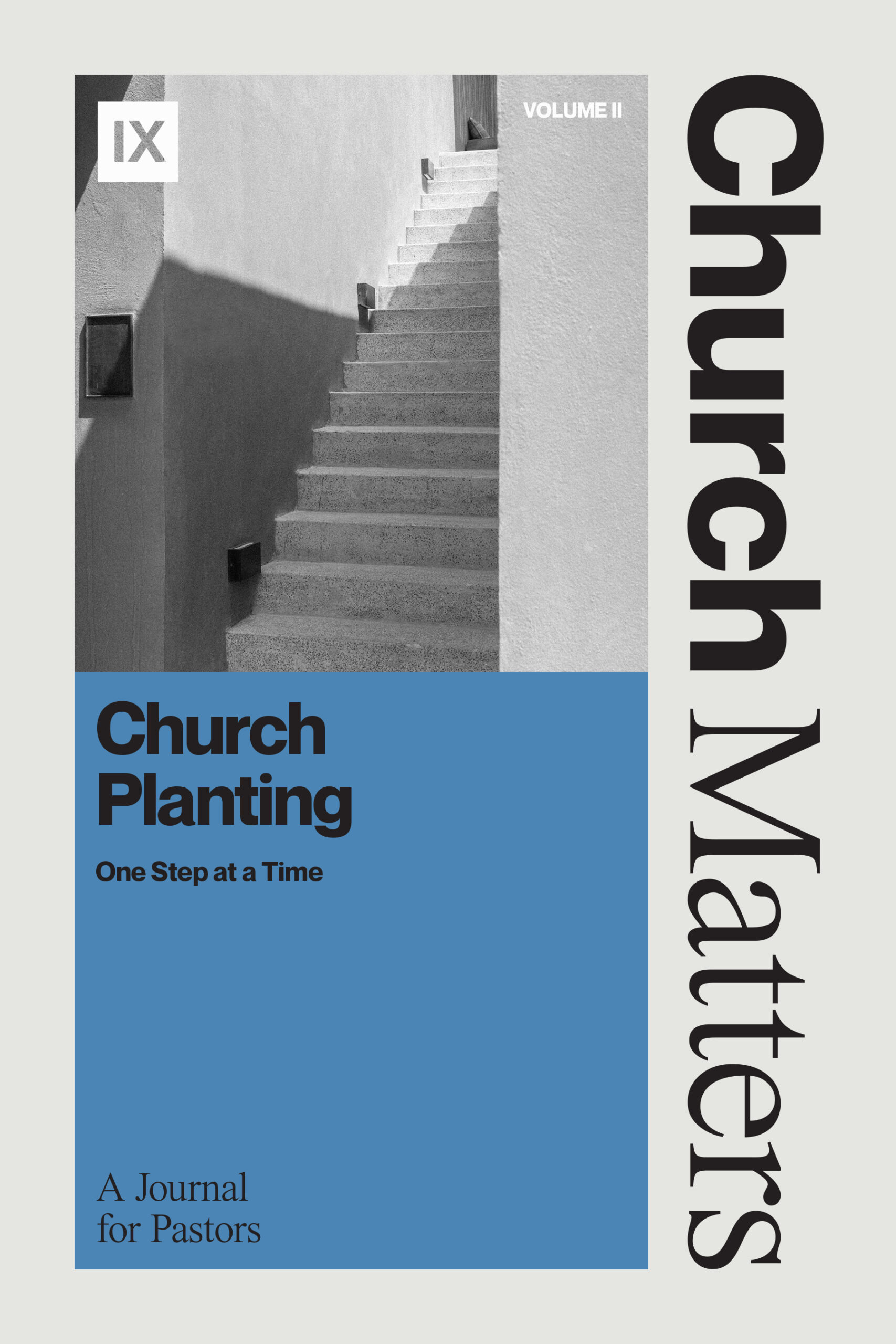Five Trends in Church Planting
What makes something a trend in one season and a norm in another? While identifying trends is valuable for assessing how church planting (CP) practices work in real-life settings, trends need not be foundational. Trends should become norms only when they arise from biblical roots. With that in mind, let’s think about five trends (among many) circulating in the CP world.
TREND 1: KINGDOM OVER CHURCH
Church planters like visionary-sounding aphorisms. “Transform the city.” “Advance the kingdom.” “Build the kingdom.” Elevated language around cooperative work has its place, yet let’s make sure such language doesn’t tamper with our theology. We don’t “transform” the city or “build” the kingdom. The Spirit does.
While Jesus calls people to the kingdom (Mark 1:15), he focuses his building work on the church (Matt. 16:18). He makes his redeemed people a kingdom of priests who exercise their priestly role through local churches (Rev. 1:6).
The kingdom is amorphous, while local churches experience concrete difficulties. It’s easy to talk about building the kingdom when one doesn’t have a gauge for what the building will look like. It’s harder to talk about planting a church where there’s little gospel presence. Big ideas with lots of talk cannot be seen, but local churches—with all their weaknesses and joys—can.
It’s not that kingdom language has no place. It’s helpful for us to think beyond the confines of an association of churches. Plus, we need to avoid the hubris that makes us think the Lord depends on our own convention or network or denomination to accomplish the Great Commission.
“Kingdom-mindedness” means we’re not just thinking about our small geographical outline but about the Lord’s global work. Kingdom language looks at the church’s catholicity, so that those holding firmly to “Christ alone” work together in kingdom work. With ecclesiological differences, we may not plant together, but we can cooperate and encourage, recognizing that the church is far bigger than what we can imagine.
In short, we should strive to be kingdom-minded, not to “build” the kingdom—which Jesus never entrusted to the church.
TREND 2: NETWORKS AND DENOMINATIONS
Forming subgroups of like-minded churches beyond the big tent of denominations has accelerated in CP in the past twenty years. Church planters recognize we can accomplish far more by cooperating in church planting networks than we can through bureaucracies or soloing. But cooperation requires doctrinal and methodological like-mindedness. Otherwise, we find ourselves fighting against one another, even in denominational circles where we can disagree over what constitutes healthy ecclesiology.
Differences of ecclesiology more broadly allow Baptists like the two of us to cooperate with Presbyterians on social action, evangelistic crusades, Bible conferences, and other disciple-making events, but not on planting a church. Planting a church requires agreeing on membership, the ordinances, and church governance. There’s no use planting a church only to let confusion reign.
But networks and denominations have challenges, too. Denominations can be inefficient. Networks can revolve around one man and his way of doing church. When such men assume an apostolic leadership style without modeling humble shepherding work, they obscure or even abandon the New Testament practice (see John 21:15–19; 1 Pet. 5:1–4).
Local churches interested in planting should seek out the wisdom and “best practices” offered by the experience of other churches. Networks and denominations can serve this purpose. Yet before joining a network or denomination, churches should consider that group’s soteriological and ecclesiological priorities, as well as what practices they require for church planters.
TREND 3: IF IT DOESN’T WORK . . .
The Church Growth Movement (CGM) beginning in the 1960s influenced the entire direction of evangelical church planting. Donald McGavran’s sociological principles for church growth, echoed and expanded by Peter Wagner, shaped denominations and their CP agencies. Church growth was equated to church health, paving a pragmatic path. Unquestionably, pragmatism has harmed the church. Churches exploded in growth, but then declined almost as quickly, so that once-massive churches are now shadows of themselves. Medium-to-smaller churches have worn themselves out on the CGM treadmill. And genuine conversion and discipleship have suffered in churches of every size.
Many church planters have witnessed what CGM-styled pragmatism has done to churches and want to avoid it. But where do they go? Too much CP-training leans into pragmatism, even if it goes by another name. As one who studied church growth with Wagner at Fuller Seminary, I (Phil) find it alarming to see the same CGM strategies given new terminology and repackaged for modern-day church planters. Reading Aubrey Malphurs’ Planting Growing Churches is a case in point. It’s not that he has no wisdom to offer, but much of the book is pragmatism, with some of his language simply couched differently than McGavran and Wagner.
There is a place for planters to be pragmatic, but the only way to avoid pragmatism is to emphasize biblical ecclesiology and soteriology. When considering CP literature or programming, planters should ask:
- Is this material biblically and hermeneutically sound?
- Does this material center on the gospel?
- Once this church is planted, who will get the glory by these methods? Will a personality, agency, denomination, or network be elevated on a pedestal due to the use of their methods? Does success rely on a program for reverse engineering results or on “the foolishness of preaching to save those who believe” (1 Cor. 1:21)?
TREND 4: CITIES AND THE MISSING MIDDLE
Most church planting work funnels personnel and resources to high-need, high-population areas. From a business standpoint, that makes good sense. But CP is not a business. That doesn’t mean we should cast care to the wind, ignoring good sense and wise stewardship. But it does mean thinking counter-culturally.
We want to see people from every tribe, tongue, people, and nation follow Jesus (Rev. 5:9–10; 7:9–10). Internationally, some people belong to small people groups of a few hundred (e.g., the Yoran in Japan or Tuerke in Kyrgyzstan). Do we neglect them to focus on the Hausas or Tajiks? Domestically, there is a massive need for urban church planting, but that does not mean suburbs and small towns have already reached gospel-saturation. We want to reach all of them. Hence, we must sometimes train, send, and fund work in smaller places among smaller population units.
Perhaps sending churches lack planting-pastors, training, funds, and core teams. Then seek the Lord about how to steward what he has given you. Strategies for CP work must arise from praying to discern the will of God. Not every church planting pastor is equipped to do urban church planting. Not every team can relocate to a small town. Resources may be thin for one area but more than sufficient for another. How has the Lord provided? As you pray, you may find the Lord directing you to plant in a place the strategists have not considered. Also ask the Lord to give you discernment over planters, teams, training, and resources.
Also, read Stephen Witmer’s A Big Gospel in Small Places and Mez McConnell and Mike McKinley’s Church in Hard Places when you’re thinking about planting counter-culturally.
TREND 5: QUICK STARTS AND SHORT-SIGHTEDNESS
Despite all the good intentions in church planting, plenty of planting pastors flame out. Energy and resources funneled into their work—sufficient or not—mean little when planters fail to hang around long enough to see a church solidify. What causes flame outs? Often, the planter lacks the maturity to pastor people. It’s not that he lacks vision, entrepreneurial skills, or a magnetic personality. It’s that he lacks the spiritual strength to persevere in faithful shepherding.
How does this happen? Churches readily accept an enthusiastic potential planter, but fail to properly vet or equip him for the work. They rightly want to be a sending church, but the leadership moves too quickly. They don’t insist on character and competence like Paul insists on them (1 Tim. 3; Titus 1), and the prospective planter himself is captured by a sense of glamor.
If your church feels a burden to plant, don’t just shove the accelerator to the floor. Speed up slowly and steadily, with discernment and patience. Get to know a man as a church member. Does he bear fruit apart from any official position? What does his discipleship to Christ look like? Wisely examining a man over time allows sending churches to recognize whether he has the character and commitment necessary for the patient work of pastoring. We’re not looking for men who like the tag, “I’m a church planter.” We want pastors who plant with the goal to labor and solidify a church (Eph. 4:11–16; Col. 1:28–29).
Trends come and go. Faithful men of God committed to shepherding the local church endure.
Related Multimedia

Why Bad Polity Hurt My Church Plant
By Phil Newton










